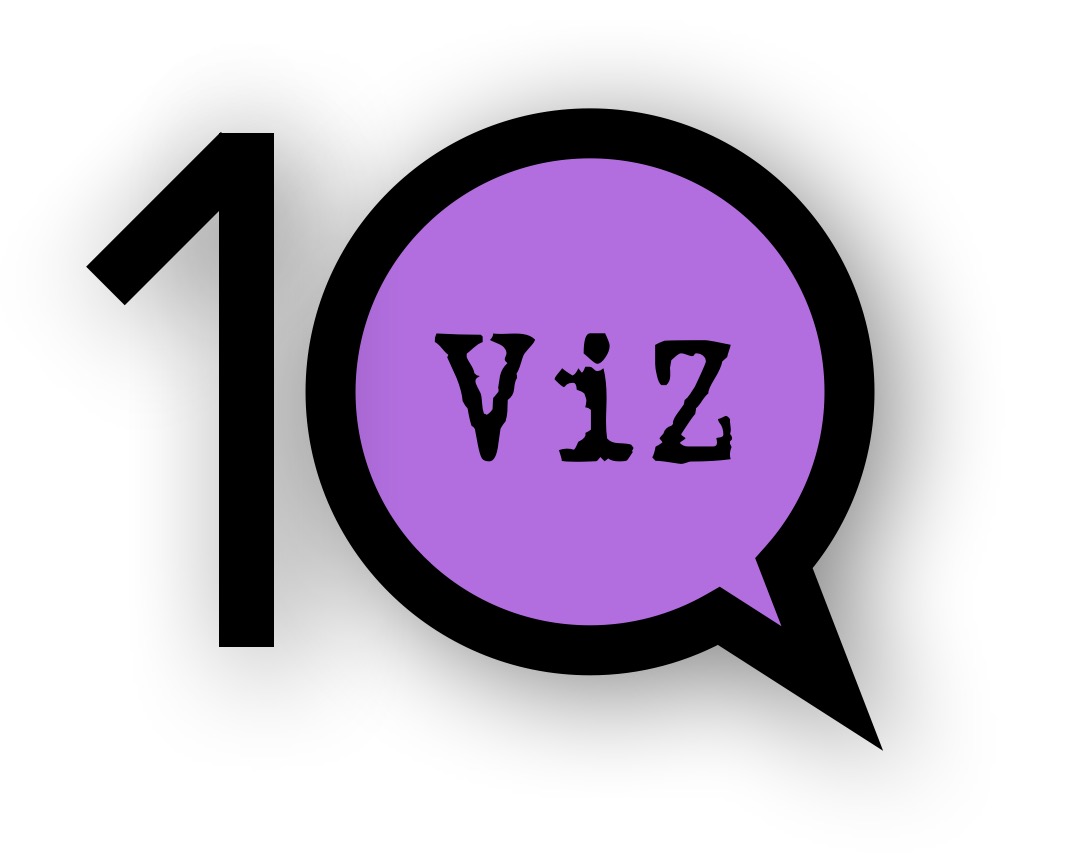
10qviz.org/categories
Preview meta tags from the 10qviz.org website.
Linked Hostnames
10- 17 links to10qviz.org
- 3 links towww.addtoany.com
- 1 link tocolorbrewer2.org
- 1 link tocolororacle.org
- 1 link toen.wikipedia.org
- 1 link toeyetracking.upol.cz
- 1 link tonews.nationalgeographic.com
- 1 link towww.geo.uzh.ch
Thumbnail

Search Engine Appearance
Categories - 10QViz
Do you want to show or explore pre-existing, known, human-interpretable, categories? e.g. state boundaries or other geographic phenomena in 2D, galaxy limits in 3D, organs within an MRI scan, name-able objects (such as: “trees,” “birds,” “refrigerators”). Note that this entry is closely related to Patterns, which refers to statistical clusters and other previously-unknown patterns that emerge from data exploration. When it is appropriate to categorize information, and a goal is to explore or explain if or how objects or phenomena that fall into a category, the way visual variables are used will have a dramatic impact on how a visualization is interpreted. Inappropriate use of visual variables can hide existing categories, or mislead by suggesting categories that are simply wrong or do not exist. Decisions or conclusions made based on misleading or wrong categorizations can be costly, so when we rely on visualizations to make inferences, it is important to be aware visual variables’ potential to mislead or misinform. Below we feature examples based on two visual variables, color and shadow, to demonstrate how they might interfere with categorical recognition tasks. When deciding on colors for a visualization, the: number of colors perceived; color scheme (qualitative, sequential or diverging*) ; and color distance (‘temperature’ difference between […]
Bing
Categories - 10QViz
Do you want to show or explore pre-existing, known, human-interpretable, categories? e.g. state boundaries or other geographic phenomena in 2D, galaxy limits in 3D, organs within an MRI scan, name-able objects (such as: “trees,” “birds,” “refrigerators”). Note that this entry is closely related to Patterns, which refers to statistical clusters and other previously-unknown patterns that emerge from data exploration. When it is appropriate to categorize information, and a goal is to explore or explain if or how objects or phenomena that fall into a category, the way visual variables are used will have a dramatic impact on how a visualization is interpreted. Inappropriate use of visual variables can hide existing categories, or mislead by suggesting categories that are simply wrong or do not exist. Decisions or conclusions made based on misleading or wrong categorizations can be costly, so when we rely on visualizations to make inferences, it is important to be aware visual variables’ potential to mislead or misinform. Below we feature examples based on two visual variables, color and shadow, to demonstrate how they might interfere with categorical recognition tasks. When deciding on colors for a visualization, the: number of colors perceived; color scheme (qualitative, sequential or diverging*) ; and color distance (‘temperature’ difference between […]
DuckDuckGo
 https://10qviz.org/categories
https://10qviz.org/categoriesCategories - 10QViz
Do you want to show or explore pre-existing, known, human-interpretable, categories? e.g. state boundaries or other geographic phenomena in 2D, galaxy limits in 3D, organs within an MRI scan, name-able objects (such as: “trees,” “birds,” “refrigerators”). Note that this entry is closely related to Patterns, which refers to statistical clusters and other previously-unknown patterns that emerge from data exploration. When it is appropriate to categorize information, and a goal is to explore or explain if or how objects or phenomena that fall into a category, the way visual variables are used will have a dramatic impact on how a visualization is interpreted. Inappropriate use of visual variables can hide existing categories, or mislead by suggesting categories that are simply wrong or do not exist. Decisions or conclusions made based on misleading or wrong categorizations can be costly, so when we rely on visualizations to make inferences, it is important to be aware visual variables’ potential to mislead or misinform. Below we feature examples based on two visual variables, color and shadow, to demonstrate how they might interfere with categorical recognition tasks. When deciding on colors for a visualization, the: number of colors perceived; color scheme (qualitative, sequential or diverging*) ; and color distance (‘temperature’ difference between […]
General Meta Tags
9- titleCategories - 10QViz
- charsetUTF-8
- viewportwidth=device-width, initial-scale=1
- robotsindex, follow, max-image-preview:large, max-snippet:-1, max-video-preview:-1
- article:modified_time2021-01-15T19:51:39+00:00
Open Graph Meta Tags
10og:locale
en_US- og:typearticle
- og:titleCategories - 10QViz
- og:descriptionDo you want to show or explore pre-existing, known, human-interpretable, categories? e.g. state boundaries or other geographic phenomena in 2D, galaxy limits in 3D, organs within an MRI scan, name-able objects (such as: “trees,” “birds,” “refrigerators”). Note that this entry is closely related to Patterns, which refers to statistical clusters and other previously-unknown patterns that emerge from data exploration. When it is appropriate to categorize information, and a goal is to explore or explain if or how objects or phenomena that fall into a category, the way visual variables are used will have a dramatic impact on how a visualization is interpreted. Inappropriate use of visual variables can hide existing categories, or mislead by suggesting categories that are simply wrong or do not exist. Decisions or conclusions made based on misleading or wrong categorizations can be costly, so when we rely on visualizations to make inferences, it is important to be aware visual variables’ potential to mislead or misinform. Below we feature examples based on two visual variables, color and shadow, to demonstrate how they might interfere with categorical recognition tasks. When deciding on colors for a visualization, the: number of colors perceived; color scheme (qualitative, sequential or diverging*) ; and color distance (‘temperature’ difference between […]
- og:urlhttps://10qviz.org/home/categories/
Twitter Meta Tags
1- twitter:cardsummary_large_image
Link Tags
36- EditURIhttps://10qviz.org/xmlrpc.php?rsd
- alternatehttps://10qviz.org/feed/
- alternatehttps://10qviz.org/comments/feed/
- alternatehttps://10qviz.org/home/categories/feed/
- alternatehttps://10qviz.org/wp-json/wp/v2/pages/74
Emails
1- Contact us at [email protected]
Links
28- http://colorbrewer2.org
- http://colororacle.org
- http://eyetracking.upol.cz/color
- http://news.nationalgeographic.com/2016/09/mountain-elevation-maps-illustration
- http://www.geo.uzh.ch/~arzu/publications/biland-coltekin2016.pdf